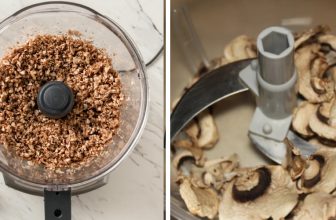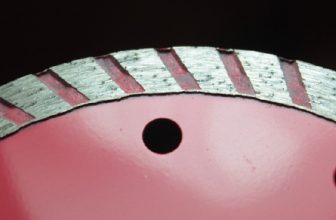How to Grind Cloves
When it comes to cooking, the right ingredients and flavors can elevate a dish to new levels. If you’re looking to add some extra flavor to your food, spices are a great way to do it. And when it comes to spices, cloves are a definite winner. Not only do they pack a flavorful punch, but they also have many health benefits. In this post, we’ll show you how to grind cloves so that you can add them to your recipes easily. Let’s get started.

Why You Should Grind Cloves
There are a few reasons why you might want to grind cloves. For one, grinding them releases their flavor and aroma, making them more potent than if you were to use whole cloves. This is especially useful if you want to add a strong flavor to a dish. Another reason to grind cloves is for the texture. They can be hard to bite into when whole and may not integrate well into a dish.
By grinding them, you can get a more uniform texture that will blend in better. Grinding cloves also helps release their natural oils, which can add even more flavor. The other benefit of grinding cloves is that they are easier to digest. They can be hard on the stomach when whole and may cause indigestion. But when they’re ground, they’re more easily broken down and can cause less discomfort.
Lastly, ground cloves will help you get the most out of them. Because they’re more potent when ground, you won’t need to use as many, saving you money in the long run.
Some Easy Ways How to Grind Cloves
1. Use a Mortar and Pestle
This is the most traditional way to grind cloves and other spices. Unfortunately, it’s also the most labor-intensive, so it’s not for everyone. But if you’re patient and want to get the most flavor out of your cloves, this is the way to go. To use a mortar and pestle, first, place the cloves in the mortar. Then, use the pestle to grind them into a powder. This will take some time and effort, but it’s worth it.
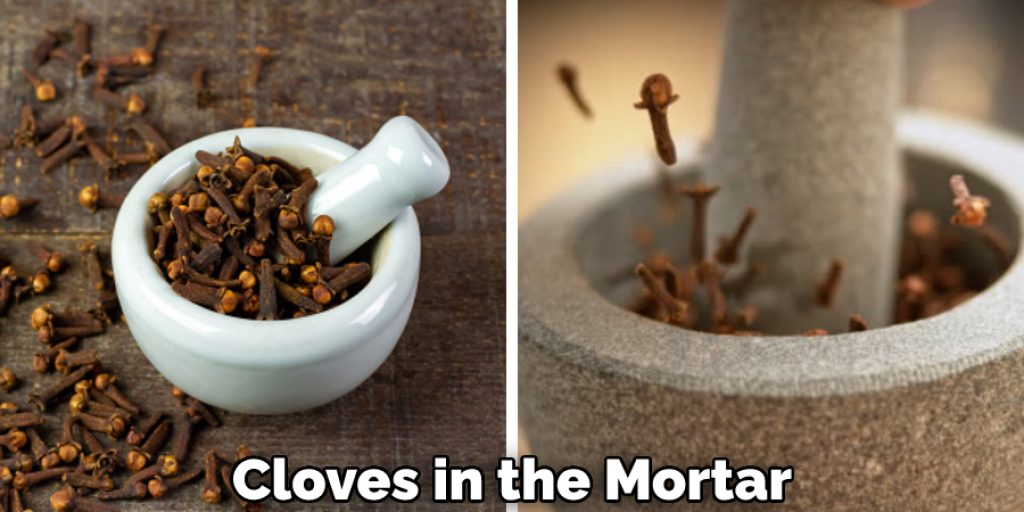
2. Use a Spice Grinder
If you don’t have a mortar and pestle, or you’re just looking for a quicker way to grind your cloves, try using an electric spice grinder. Add your cloves to the grinder and pulse until they’re finely ground. Be careful not to overdo it, or you’ll end up with a clove paste. If your spice grinder has multiple settings, start with a coarse grind and work your way up to a fine one.
3. Use a Coffee Grinder
You can use a coffee grinder if you don’t have a spice grinder. Just add your cloves to the grinder and pulse until they’re ground to your desired consistency. To do this, put the cloves in the coffee grinder and pulse until they’re chopped up to your desired consistency. Be sure to clean out your coffee grinder afterward to get rid of any residual cloves.
4. Use a Blender or Food Processor
If you have a high-powered blender or food processor, you can use it to grind your cloves. Just add the cloves to the blender or food processor and Pulse until they’re ground to your desired consistency. You may need to stop and scrape down the sides of the blender or food processor a few times to ensure all the cloves are getting ground.
5. Use a Knife
If you don’t have any type of grinder, you can try using a knife to chop your cloves. Knife grinding will take a little more time and effort than using an electric grinder, but it is still possible to get the job done. First, place the cloves on a cutting board. Then, use a sharp knife to chop the cloves into small pieces. Keep chopping until the cloves are reduced to a fine powder.
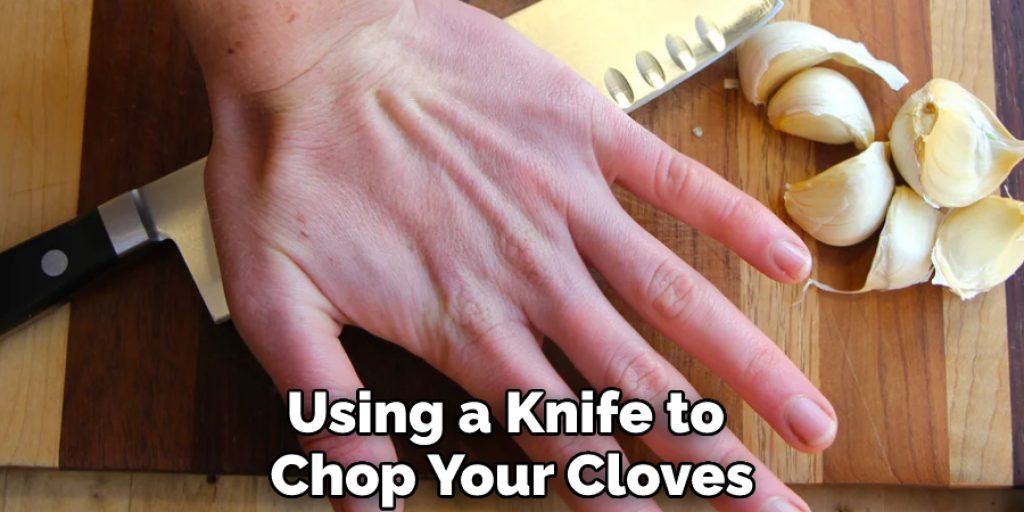
If necessary, you can use a pestle to grind the cloves into powder further. Finally, sift the powder through a mesh strainer to remove any large pieces.
6. Use a Rolling Pin
If you don’t have a knife or grinder, you can try using a rolling pin to grind your cloves. Rolling pins are common kitchen utensils, so you likely have one on hand. First, place the cloves on a cutting board. Then, roll the rolling pin over the cloves, applying as much pressure as you can. Keep rolling until the cloves are ground to your desired consistency.
If your rolling pin is small, you may need to use some elbow grease to get the job done. Otherwise, this method is easy and effective.
7. Use a Hammer
Hammering is another option if you don’t have a grinder or knife. It’s also a good way to release some aggression! First, place the cloves in a plastic bag. Then, hold the bag closed tightly and use a hammer to hit it until the cloves are reduced to powder. Be careful not to hit your hand.
If you don’t have a plastic bag, you can place the cloves on a cutting board and cover them with another board before hammering. This will help to protect your hand and the surface you’re working on.
8. Use a Stone
If you have a stone, such as a granite mortar and pestle, you can use it to grind your cloves. First, add your cloves to the mortar. Then, the pestle pressed down on the cloves and ground them into powder. You may need to use a circular motion to get the best results. If your cloves are too difficult to grind, you can add a little water to help them along. Just be sure to add a drop or two at a time, as too much water can make your cloves difficult to grind.

9. Use a Mallet
You can use a mallet to grind your cloves if you don’t have a stone. Mallet grinding is a little harder to get uniform and can result in a lot of small pieces. To do this, place your cloves in a ziplock bag and hit them lightly with the mallet. Again, you may want to do this in short bursts, so you don’t end up with dust. You can also put the cloves in a clean sock and hit them with the mallet if you don’t have a bag.
10. Use an Ice Cube Tray
If you have trouble grinding your cloves, you can try using an ice cube tray. Ice cube tray can help to grind the cloves more easily. First, place the cloves in the ice cube tray. Then, use a hammer to hit the cloves. The ice will help to grind the cloves more easily. You can also use a ziplock bag if you don’t have an ice cube tray.
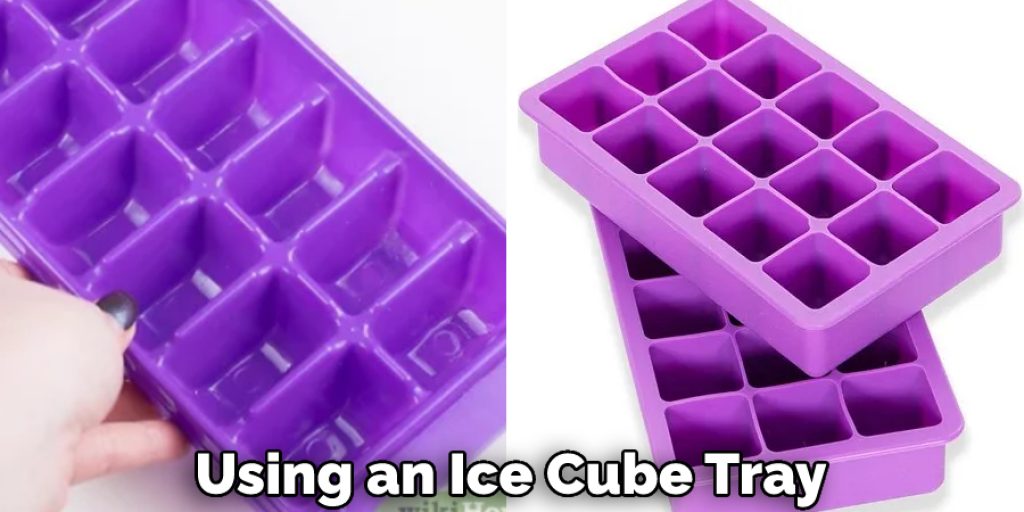
Tips and Warnings on How to Grind Cloves
Tips:
- Be sure to use a clean and dry grinder.
- Do not overfill the grinder, making the grinding process more difficult.
- Pulse the grinder rather than running it continuously, as this will help to grind the cloves more evenly.
- Use a light touch when grinding, as pressing too hard can damage the grinder.
- If the cloves are not grinding evenly, try removing them and pulsing the grinder again.
Warnings:
- Be careful not to inhale too much of the powder, as this can irritate the lungs.
- Do not use a metal grinder, as this can cause sparks and a fire hazard.
- Do not grind cloves near an open flame.
- Keep children and pets away from the grinder while in use.
- Do not touch the blades of the grinder with your hands.
FAQ
How Long Does Ground Cloves Last?
Ground cloves will last for 6-8 months if stored in a cool, dark place. If you want them to last longer, you can store them in the fridge or freezer. Cloves can also be stored in a sealed jar or container. Try to use them within a year for the best flavor.
Are Ground Cloves Healthy?
Yes, ground cloves are healthy. They are a good source of antioxidants and have anti-inflammatory and anti-bacterial properties. Cloves can also help to improve blood sugar control and reduce bad cholesterol levels. It also helps to boost the immune system.
How Much Ground Cloves Should I Take?
The recommended dose of ground cloves is 1-3 grams per day. However, if you are taking it for medicinal purposes, be sure to follow the advice of your healthcare provider. Ground cloves can be taken in capsules, tablets, or tinctures. Cloves can also be added to food or beverages.
Conclusion
So there you have it, everything you need to know about how to grind cloves. It’s not that difficult, and with a little practice, you’ll be able to do it like a pro in no time. Just remember to use fresh cloves and grind them as close to the time of use as possible for the best flavor. Enjoy!

